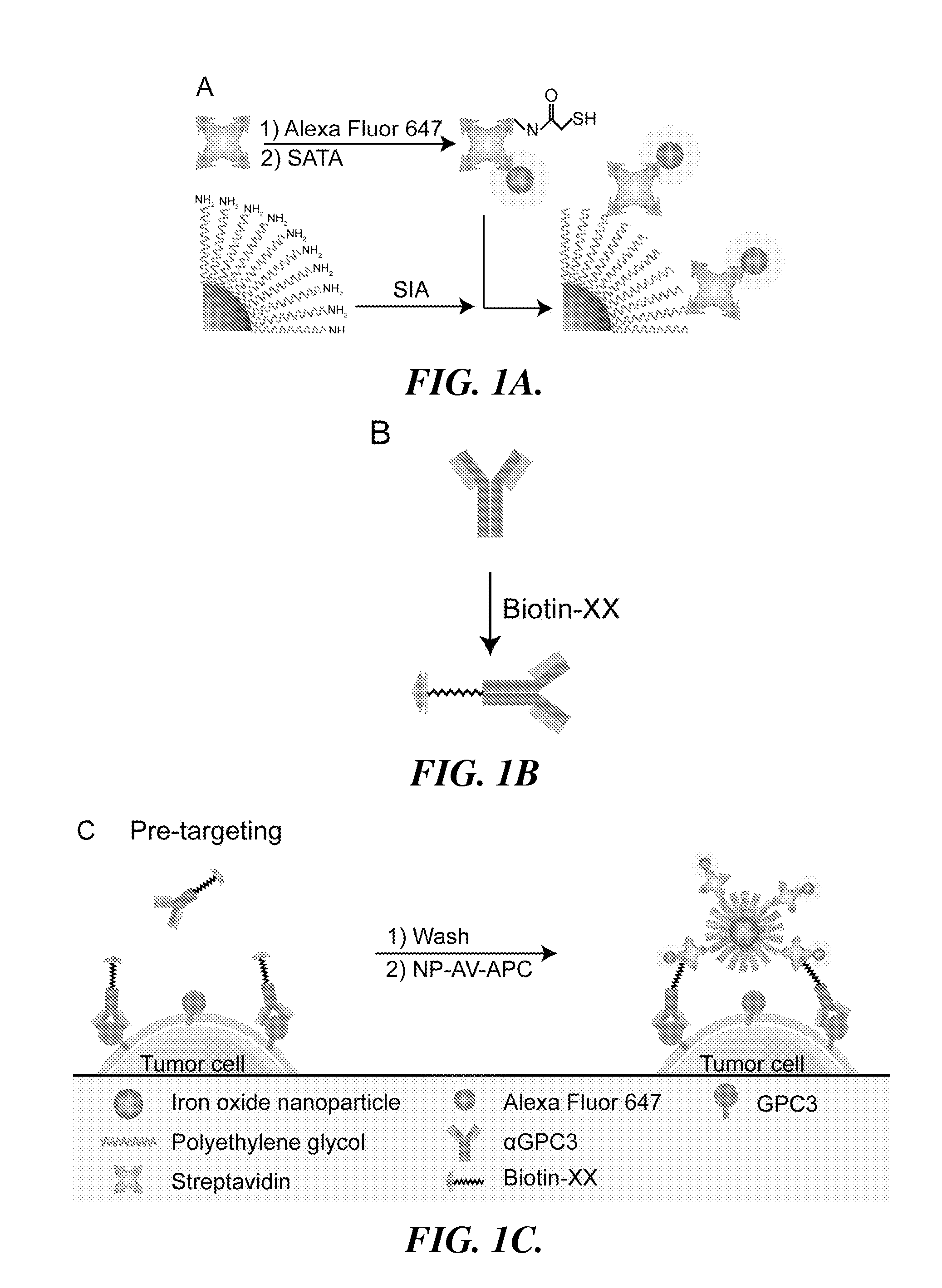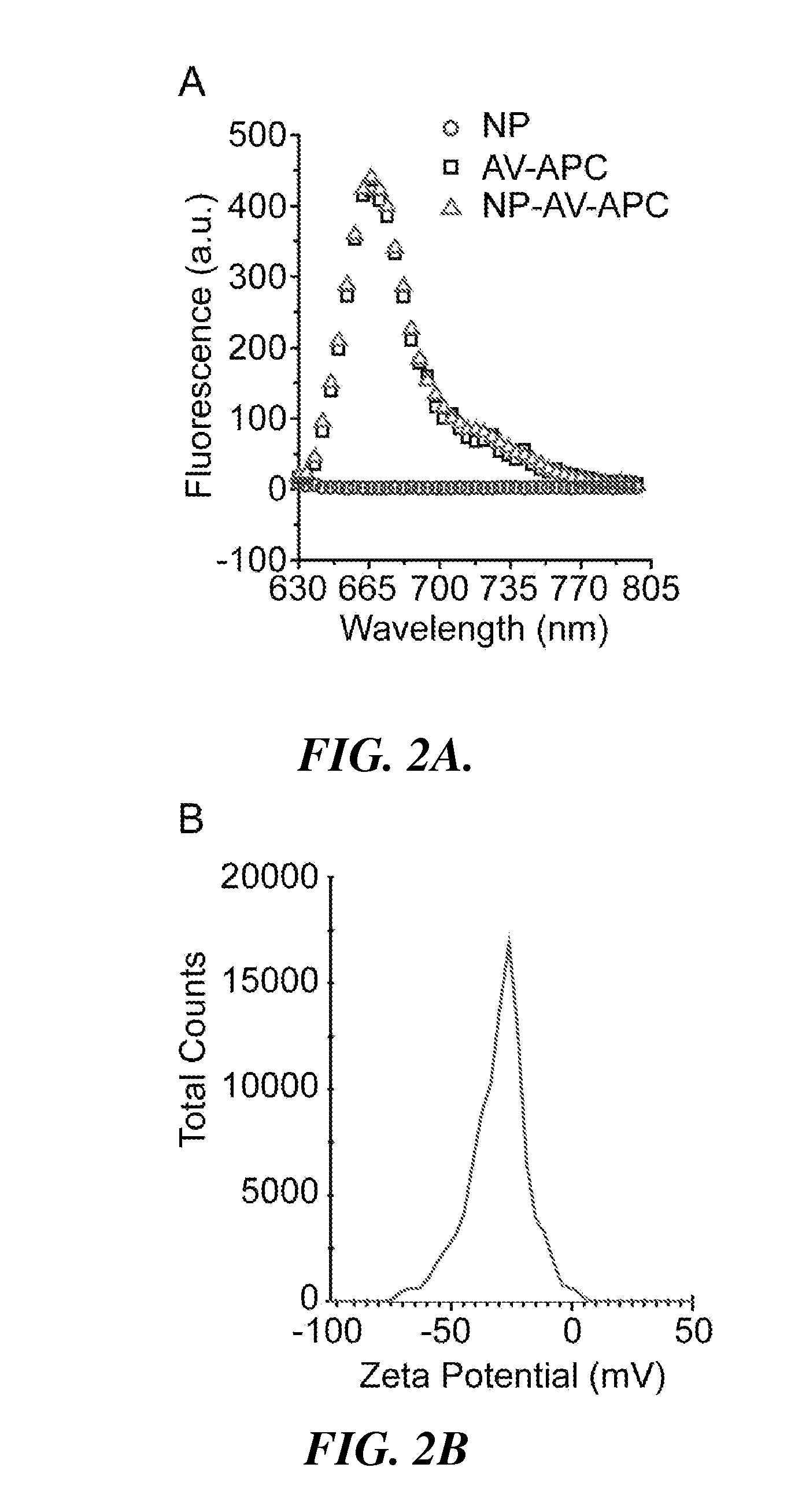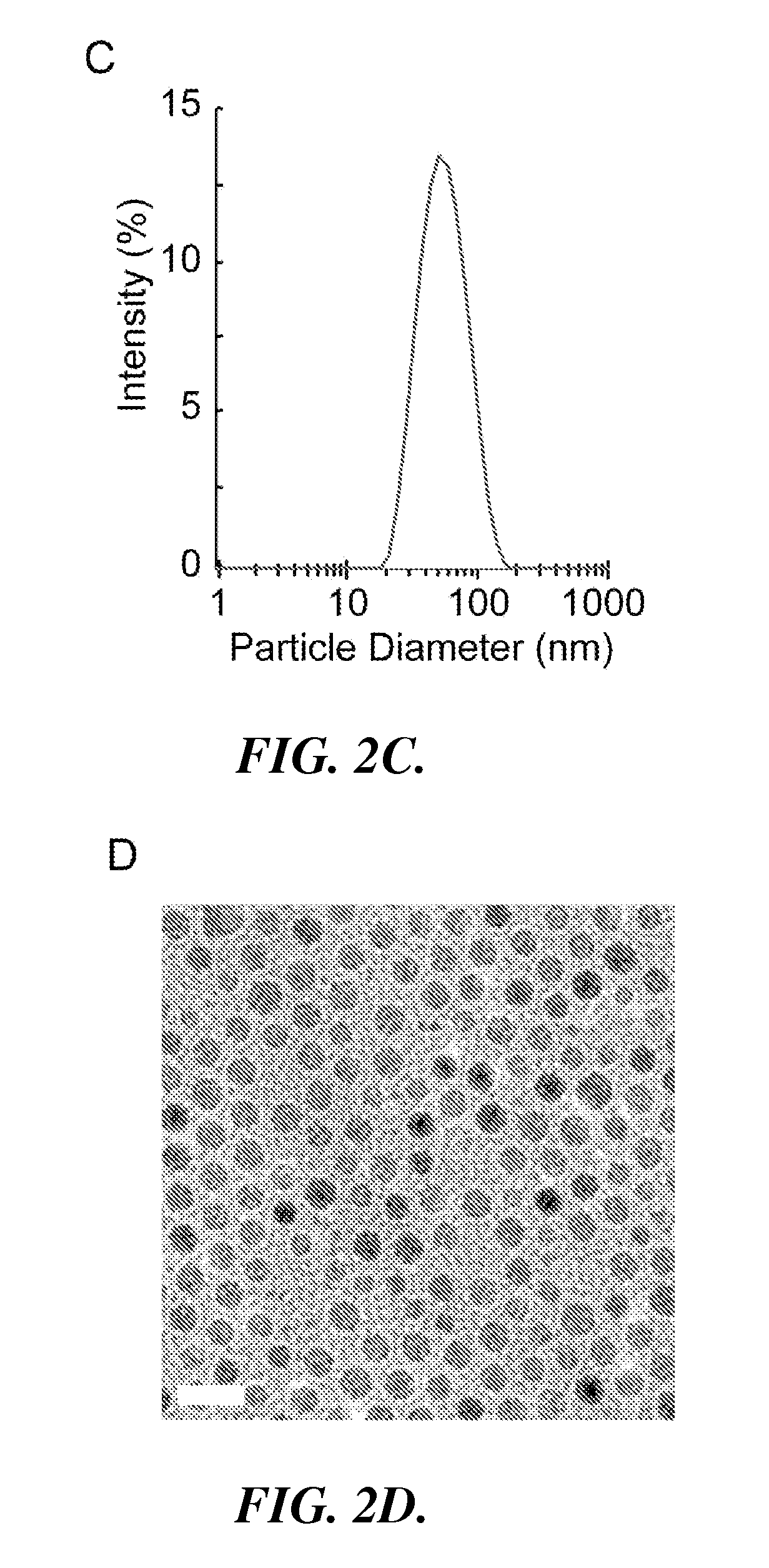Glypican-3 targeting of liver cancer cells using multifunctional nanoparticles
a multifunctional, nanoparticle technology, applied in the direction of instruments, material analysis, measurement devices, etc., can solve the problems of missed treatment opportunities, early recurrence, delay in diagnosis and treatment,
- Summary
- Abstract
- Description
- Claims
- Application Information
AI Technical Summary
Benefits of technology
Problems solved by technology
Method used
Image
Examples
example 1
Preparation, Characterization, and Use of Representative Nanoparticle and Labeled Targeting Agent for Imaging HCC Cells
[0097]In this example, the preparation and characterization of a representative nanoparticle (NP-AV-APC) and labeled targeting agent (biotinylated αGPC3) useful in the methods and systems of the invention is described. Also described is the use of the representative nanoparticle and labeled targeting agent in a method for imaging HCC cells in which HCC cells are pre-targeted with the labeled targeting agent and then labeled with nanoparticle having dual functionality (fluorescence and magnetic resonance imaging capabilities).
[0098]Preparation of Iron Oxide NPs and Surface Modification
[0099]Iron oxide NPs were prepared as described in Fang C., et al., “Functionalized nanoparticles with long-term stability in biological media,” Small, 2009 5(14):1637-41. Briefly, oleic acid-coated NPs synthesized by thermal decomposition of iron oleate complex were reacted with trieth...
example 2
Preparation of a Representative Nanoparticle for Imaging HCC Cells
[0117]In this example, the preparation of a representative nanoparticle (chitosan-grafted PEG NP) useful in the methods and systems of the invention is described.
[0118]The iron oxide nanoparticles were synthesized and coated with the chitosan-PEG polymer by co-precipitating Fe(II) and Fe(III) with the addition of sodium hydroxide in the presence of the polymer, as described in U.S. patent application Ser. No. 12 / 384,923, filed Apr. 9, 2009 (US 2010 / 0260686), expressly incorporated herein by reference in its entirety. The chitosan-PEG coated nanoparticles (NPs) were then transferred into a 0.1M sodium bicarbonate pH 8.5 buffer by gel permeation chromatography (GPC) using Sephacryl S200 medium (GE Healthcare, Piscataway, N.J.).
[0119]The NPs can be fluorescently labeled with Alexa Fluor 647 (AF647) by dissolving 1 mg AF647 succinimidyl ester (Invitrogen, Carlsbad, Calif.) in 0.15 mL dimethylsulfoxide (DMSO) and mixing wi...
example 3
Method for Preparing a Representative Anti-Glypican-3 Antibody: GPC3 IgG1
[0120]In this example, methods for preparing a representative anti-glypican-3 antibody (GPC3 IgG1) and related functional fragments are described.
[0121]GPC3 IgG1. GPC3 IgG1 producing hybridomas were generated using conventional methods. Briefly, RBF / DnJ mice were immunized with recombinant human GPC3 protein in Freund's adjuvant. Following several boost injections, antiserum ELISAs confirmed presence of the GPC3 IgG. Additional boosts were delivered to ensure IgM / IgG switch, verified on ELISA with IgG titrated 1:10,000. Following final pre-fusion boosts, mice were euthanized, spleens were harvested, and 108 splenocytes were fused 1:1 with FOX-NY myeloma cells, and resultant hybridomas were resuspended in adenine / aminopterin / thymidine FBS. Clones producing high GPC3 IgG1 titers were selected using capture ELISA with goat anti-mouse IgG1 for isotyping. FACS repeated with protein A purified GPC3 IgG1 from these h...
PUM
| Property | Measurement | Unit |
|---|---|---|
| Magnetism | aaaaa | aaaaa |
| Affinity | aaaaa | aaaaa |
Abstract
Description
Claims
Application Information
 Login to View More
Login to View More - R&D
- Intellectual Property
- Life Sciences
- Materials
- Tech Scout
- Unparalleled Data Quality
- Higher Quality Content
- 60% Fewer Hallucinations
Browse by: Latest US Patents, China's latest patents, Technical Efficacy Thesaurus, Application Domain, Technology Topic, Popular Technical Reports.
© 2025 PatSnap. All rights reserved.Legal|Privacy policy|Modern Slavery Act Transparency Statement|Sitemap|About US| Contact US: help@patsnap.com



